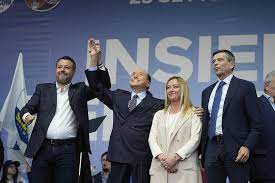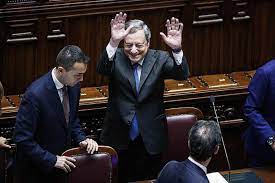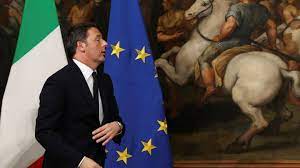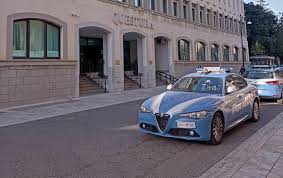Italy is set for its 68th government in 76 years

Andrea Carlo
Islamabad: Italy’s new parliament is convening this week to install its 68th government since the end of World War II
Averaging a new cabinet every 13 months, it seems that having a new government has become something of an annual tradition in Italy.
Here we look at why the country has such a high turnover of governments.
Italy has been a constitutional republic ever since an institutional referendum in 1946 decided to eliminate the monarchy.

In the first few years after World War II, the beleaguered country emerged weakened and humiliated due to its wartime alliance with Nazi Germany. The partisan forces that fought Benito Mussolini’s Fascist regime temporarily set aside their political differences to form a coalition government that would lead the country out of the wreckage.
Italy’s political landscape, nonetheless, grew highly polarised by the 1950s, and saw the country largely split into two political camps: that of the Christian Democrats and the Communists.
The Christian Democratic party — a broad church that united moderate right-wingers and leftists under a socially conservative, paternalistic platform — dominated Italian post-war politics, and was in government for nearly half a century.
Guided by the idea that Italy needed to be anchored to foreign support and European integration to restore its international relevancy, the Christian Democrats led the country through its post-war economic miracle and fostered strong transatlantic ties with the United States.

On the opposition were the Communists, who perennially threatened the Christian Democrats’ chokehold on Rome’s political establishment and often obtained excellent electoral results, despite never managing to come to power. They initially embraced the USSR but ended up untangling themselves from the Soviet sphere of influence over the decades.
There were other noteworthy parties as well — the leftist Socialists, centrist Republicans, and far-right Italian Social Movement, for instance — some of which often joined coalition governments, but the main political cleavage throughout the post-war decades remained between the two aforementioned camps.
In the 1970s, such tribal political rivalries started bubbling up, leading to a period of far-right and far-left political violence known as the “Years of Lead”. An attempted compromise between the Christian Democrats and Communists fell through; the turmoil eventually culminated in a set of terrorist attacks and the assassination of a former prime minister in 1978.
A brief “honeymoon” period of economic prosperity in the 1980s was eventually followed by further upheavals. In the 1990s, Italy’s party system collapsed under the weight of corruption scandals that swept through all the major parties.
The end of the Cold War and a new phase in the European integration process also rendered longstanding ideological divisions obsolete; the growing influence of regionalist politics, especially that of the secessionist Northern League party, further muddied matters.
As a result of the crisis, all major parties were effectively dismantled by the mid-1990s, concluding Italy’s so-called “First Republic”.
The media tycoon, who had already built a private television empire, created a new party, Forza Italy, which mixed the conservative Catholic politics of the defunct Christian Democrats with a shiny, business-friendly model of populism. Indeed, the party’s name, which translates loosely as Go Italy!, is derived from a popular football chant.
Berlusconi quickly rose to power and ended up heading four non-consecutive governments over the span of nearly two decades, making him Italy’s longest-serving PM since World War II.
In spite of his widespread popularity among the Italian public, detractors accused him of corruption, cronyism and Mafia ties; sexual misconduct scandals further rocked his image in the 2000s. By 2011, the mounting Eurozone crisis resulted in him losing his majority in parliament and being forced to stand down.
In the wake of Berlusconi’s political demise, no single party or bloc was able to command a majority. This resulted in a rapid succession of big-tent coalition governments headed by largely unpopular technocrats over the course of the 2010s. Amid austerity and heightened refugee influxes, populist forces — ranging from the anti-establishment Five Star Movement to Matteo Salvini’s refashioned, pan-Italian League — skirted with electoral success and even entered government.
Come 2020, both the COVID-19 pandemic, which ravaged the country, and the particularly stringent restrictions that accompanied it provoked significant socioeconomic hardship, and left the electorate politically divided.
Such turbulence, alongside the added challenges posed by the Ukraine war and the cost-of-living crisis, prompted many Italians’ decision to embrace a turn to the far-right and pin their hopes on who will soon become the country’s first female prime minister: Giorgia Meloni.





